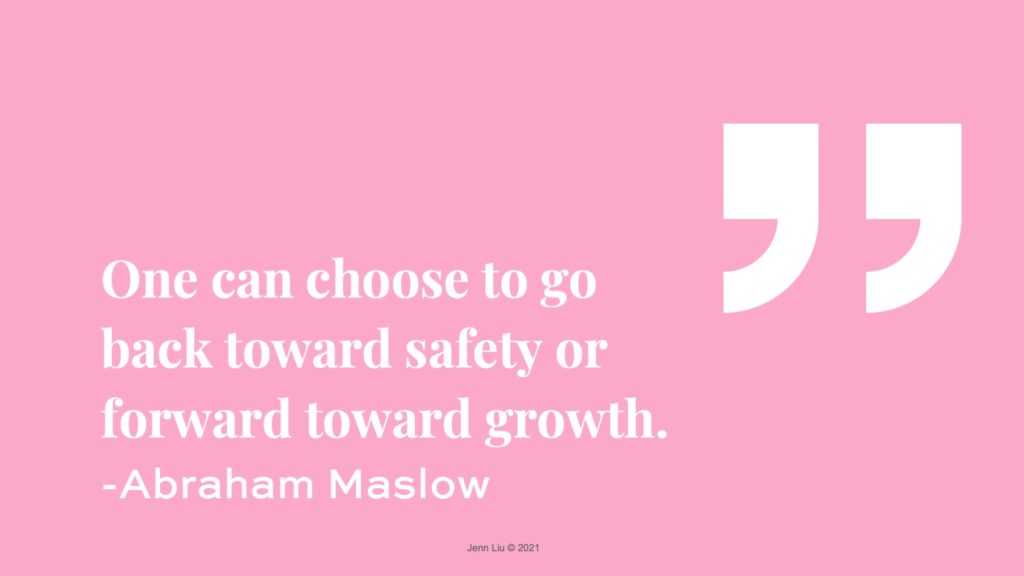“I have no idea where most of the people who worked for me went to college. I just know: Did they get stuff done or did they not?” –former President Barack Obama
While it may not always matter to our former POTUS where his staff went to college, choosing a college isn’t a decision to be taken lightly. High school teachers and counselors know this, so we do our best to help students with this important decision.
After all, we know students could be spending four or five years at the college they choose and giving up a lot to do so. We also know from our own experiences as former college students, the college years can be the most formative years of one’s life.
Here are 10 tips you can give students to help them with how to choose a college.
1. TALK TO OTHER PEOPLE.
Ask people what they thought of the college they went to. For instance, ask teachers, your relatives, parents’ friends, your counselor, a friend’s older sibling, employers, coaches, current and former college students, and neighbors. You can even ask on Reddit and Quora. If you know an adult working in the field you are interested in, talk to that person! Don’t know anyone? Ask teachers to help you make connections!
In addition, feel free to contact the admissions office of the schools you are interested in and see if they can connect you with current students or alumni who are willing to share their experiences.

2. THINK LONG-TERM AND ABOUT WHAT IS BEST FOR YOUR FUTURE SELF.
This might mean getting out of your comfort zone and moving away from family and friends. Indeed, this can be hard because it’s not easy to leave friends, family, and your hometown if you like it, but it’s also good to experience new things, which can be good for personal growth and oftentimes necessary to meet your goals.
Consider what you might think when looking back on your life: Will you be proud if you forced yourself out of your comfort zone when choosing a college? Will you regret it if you didn’t take a chance on a great opportunity? Imagine what your future self will think!
3. CONSIDER LOCATION.
What kind of town or city is ideal for you? Is the weather okay for you year-round? Are there enough stores, theaters, restaurants, and parks nearby if that matters to you? Will you feel safe enough? What are the crime statistics? These are all smart questions to ask when choosing a college.
Of course, keep in mind most cities will have more crime, but that shouldn’t stop you from going to school in a city because there are precautions you can take. You might also think about how much it will cost to fly or drive home, or at least to friends and relatives if that’s important to you.
Also, if you don’t feel ready to move far away from home right away, you could always transfer your sophomore or junior year when you feel ready. Or instead, you could even try a semester or summer abroad to experience living away from home for just a short time.
4. THINK ABOUT SIZE.
Would a big or small school be better for you, or something in between?
Pros of small schools:
- More personalized attention from professors and the chance to get to know them better and even do research with them
- More discussions and fewer lectures
- Stronger sense of community
Cons of small schools:
- Fewer support programs, activities, and academic programs
- Less anonymity
Pros of large schools:
- More support programs, activities, and academic majors/programs
- More distinguished professors
- Bigger libraries and facilities
- More social life and Greek life
- More anonymity
Cons of large schools:
- Less personalized attention from teachers, more lectures
- Less sense of community
- Possibly more graduate students and fewer research opportunities for undergraduates (research opportunities usually go to master’s and doctoral students)
5. USE AN INTERNET COLLEGE SEARCH.
This is a website that takes your criteria and generates a list for you to make choosing a college easier. Try the college search on bigfuture.collegeboard.org. This search allows you to filter by location, major, type (e.g., 2-year or 4-year, public or private, etc.), and campus life. Or check out niche.com and collegescorecard.ed.gov.
6. LOOK AT THE ACADEMICS AND REPUTATION OF THE COLLEGE.
When choosing a college, you might also ask: Is it an impressive school? Is this college good enough for me? Does it meet my standards?
What determines a college’s reputation? Some things to consider are:
- The quality of the program you are interested in
- The college’s return on investment
- What graduates earn on average
- The college’s retention rate
- The college’s graduation rate
- The faculty’s qualifications and interests
- And prestige! But does prestige matter?
It’s just not clear if college name matters — it just depends. For some careers, college name may not matter; for other careers, it helps you stand out above the rest. You might also consider that elite schools statistically have better graduation rates and they are known for having a more intellectual culture (by the way, the College Scorecard website is great for looking up graduation rates).
One study found that elite colleges help minorities succeed because they provide poorer students with better job connections (which wealthier students get from their parents). This is because job connections can come from the network you develop while in college, which poorer students may not have from family and pre-college friends. The study found that for upper-class students, where they went to college didn’t matter as much.
7. CONSIDER ADMISSION REQUIREMENTS AND WHETHER YOU COULD REALISTICALLY GET INTO THE COLLEGE.
Common admission requirements include GPA, test scores (SAT/ACT), essays, the strength of high school courses, extracurricular activities, and letters of recommendation. Usually, the more competitive a school is, the more they require you to submit.
First, find out the admission requirements for the colleges you are interested in. Then see whether you are on track to be accepted if you were to apply. If you aren’t on track, can you make changes to increase your chances of acceptance? Or would you have a better chance by going to a community college first? You can easily find admission requirements on a college’s website.
Remember, just because you don’t currently meet the requirements doesn’t mean you can’t get in at some point. It just might mean changing your current plan, improving in school, or going to a community college first. Also, keep in mind that many schools are now test-optional or test blind.
8. LOOK AT COSTS AND FINANCIAL AID.
Can you meet your share of the estimated costs? Consider:
- How much for tuition, fees, room, and board?
- What percentage of students receive financial aid?
- What is the average debt students graduate with?
- Do you have a good chance of getting aid?
You can find all this information on the Internet and by talking to your parents about how much they will realistically be able to help you with. Keep in mind: many state schools on the West Coast offer WUE tuition discounts to students from other west coast states. And some private schools meet 100% of students’ financial needs! Be aware this might include student loans.
9. VISIT THE CAMPUS IF YOU CAN.
It can be expensive to travel but if you can, it’s great to see a campus in person and get a better feel for it. You want to know if the college feels like the right fit for you. Some important things to pay attention to are:
- Students who attend the college (Could they be your peeps?)
- Student housing
- Food/dining options
- The campus vibe
- Libraries, art galleries, theaters
- Sports facilities
- What the weather feels like
- Campus events
- What’s around the campus
When visiting, there is so much to observe as listed here, but keep in mind, the main question to ask yourself is: “Does this college feel like a good fit for me?”
You should of course try to go when school is in session. This is not always possible but highly recommended to actually see students on campus and get a real feel for the school. Try talking to current students to see what they think. Most college websites offer a virtual tour. Visit school websites to find out. You can also try youvisit.com. No, it’s not the same as a real visit, but it’s still helpful!

10. MAKE A LIST.
Finally, make a list of the colleges you want to apply to. Include dream, target, and safety schools. Use all the criteria mentioned to choose several colleges: 2-3 dream/reach/stretch schools, 3-4 target/match schools, and 2-3 safety schools.
The criteria you use to choose a college will depend on the criteria most important to you, whether that’s location, size, cost, prestige, or something else. This will be different for everyone.
Dream schools are colleges where you fall on the lower end of the acceptance range. You should still try your dream schools if you are at least on the lower end of the acceptance range because you never know — you might have or do something they are interested in! For example, you might be a trumpet player and their band needs more trumpet players!
Target schools are schools you are most likely to get accepted to.
Safety schools are schools you are pretty guaranteed to get into.
Then what? Apply and see where you get accepted and use all criteria to make a final decision! You might also talk to your parents for help in making your decision.
Once you have your list, the next thing you would do is apply to all the schools on your list if you can, or at least a few of them, but make sure to have at least one school in each category. You may not get into your first-choice school, so be sure to apply to several schools.
These are not necessarily sequential steps to choose a college, as the process doesn’t need to be so linear, and most students go back and forth with these different things they can do to make a decision.
To determine your number one choice, rank all the criteria in order of importance and use your top three criteria to make your choice. Of course, in the end, you can only choose from the schools that accept you.
This might seem like a lot, but the earlier you start your research and the more research you do, the easier it will be!
Teachers and Counselors: If you would like a beautiful done-for-you Google Slides presentation that covers all of the above, then click HERE to get it! (Click HERE for the Pear Deck version!) You might also like these “How to Choose a College” Worksheets.
Once students have chosen a college, have them do a college research project! Check out this blog for ideas!

If you found this article helpful, share it with your teacher friends and colleagues!
Bold font